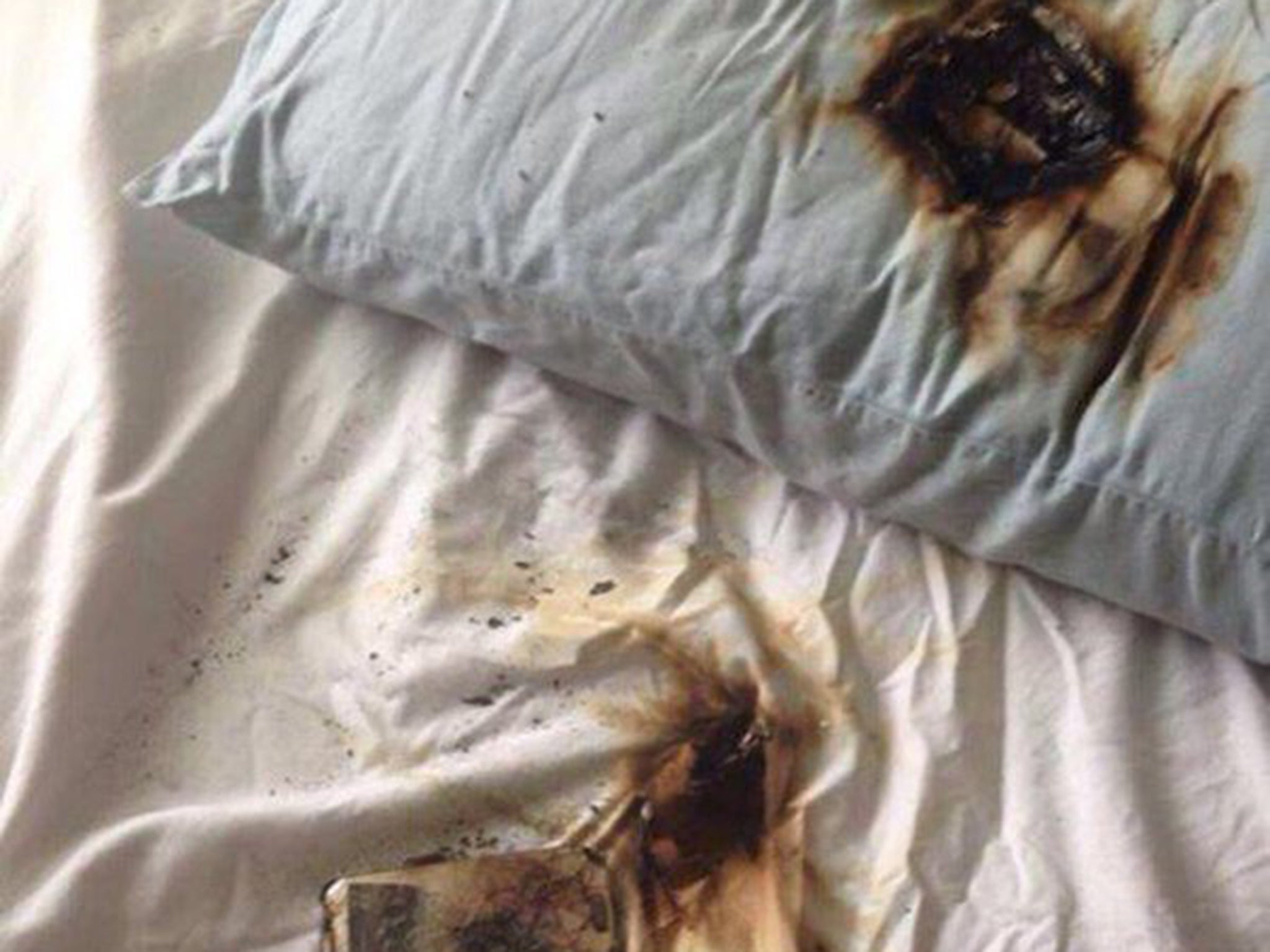The pictures that show why you should never charge your phone under your pillow
Images revealed by NYPD show the practice represents a serious fire risk

The potentially dangerous effects of charging mobile phones under a pillow have been revealed in a series of photos released by New York police.
The four images shared by NYPD 33rd precinct show a destroyed phone next to a pillow with a large hole burned into it. The mattress is also stained and burned.
Posted on a Twitter account run by Deputy Inspector Wilson Aramboles, Commanding Officer of the precinct, the pictures were accompanied by the caption: “Don’t put your cellphone under a pillow when sleeping or when charging your device. Please share this tip and b safe!”
The four images were from various incidents – two of which occurred in the UK, according to the Daily Mail.
One was posted by Leicester resident Dwayne Blanchard, and another by Holly Hewett from Kent.
It had previously been claimed that charging mobile phones overnight, or charging them when the battery is not completely dead, could destroy the battery.
While that used to be true, developments in technology means it is no longer the case. Older phones and laptops contained Nickel Metal Hydride batteries, which could be damaged by charging them too much and never letting them drain.
The Lithium-ion batteries no used in gadgets do not have this problem – they ‘know’ when they are full, and will not keep charging past capacity.
Join our commenting forum
Join thought-provoking conversations, follow other Independent readers and see their replies
0Comments